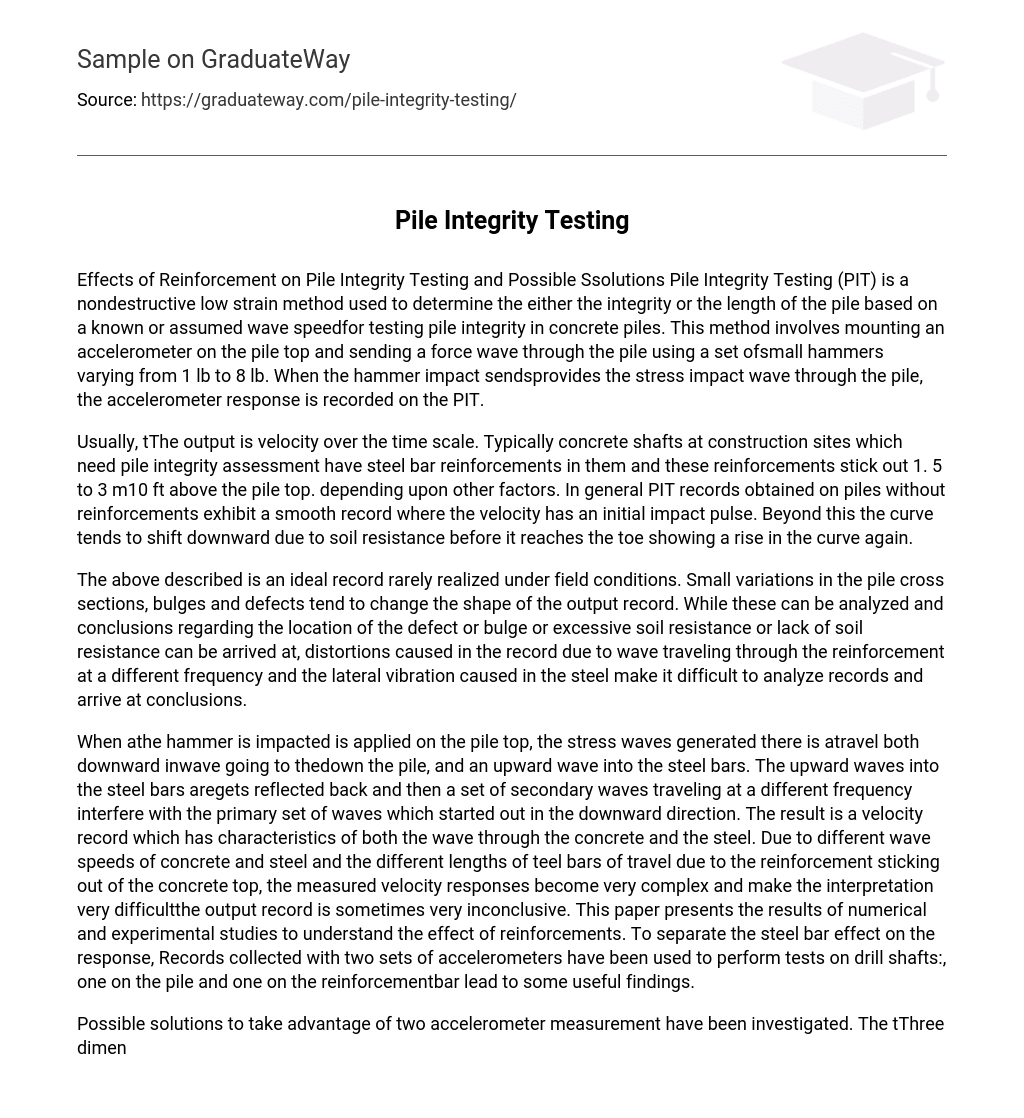Pile Integrity Testing (PIT) is a nondestructive low strain method for testing the integrity or length of a concrete pile. It uses a known or assumed wave speed to determine the results. The test involves attaching an accelerometer to the top of the pile and using a range of small hammers, from 1 lb to 8 lb, to send a force wave through the pile. The response of the accelerometer is then recorded on the PIT.
Typically, the output is the velocity over time scale. Generally, concrete shafts at construction sites that require pile integrity assessment have steel bar reinforcements protruding 1.5 to 3 meters (10 feet) above the pile top, depending on other factors. Piles without reinforcements usually exhibit a smooth record in the PIT records, with an initial impact pulse in the velocity. However, beyond this point, the curve tends to shift downward due to soil resistance before rising again as it reaches the toe.
The described record is rarely achieved in field conditions as small variations in the pile cross sections, bulges, and defects alter the output record’s shape. Although these variations can be analyzed to determine the location of defects, bulges, excessive or lack of soil resistance, analyzing records and drawing conclusions is challenging due to distortions caused by wave frequencies traveling through the reinforcement and lateral vibration in the steel.
When the hammer impacts the top of the pile, stress waves are generated. These waves travel downward through the pile, while simultaneously an upward wave is transmitted into the steel bars. The upward wave in the steel bars reflects back, resulting in a secondary set of waves with a different frequency that interferes with the primary set of waves traveling downward.
The velocity record obtained combines the characteristics of both the concrete and steel waves. The varying wave speeds of concrete and steel, as well as the different lengths of steel bars sticking out from the top of the concrete, contribute to the complexity of the measured velocity responses. Consequently, interpreting the output record becomes challenging and often inconclusive.
The purpose of this paper is to communicate the findings of both numerical and experimental studies that aimed to investigate the impact of reinforcements. In order to distinguish the influence of steel bars on the response, two sets of accelerometers were utilized to conduct tests on drill shafts. These tests included measurements taken on both the pile and the reinforcement bar, resulting in valuable insights.
The investigations explored potential solutions for utilizing two accelerometer measurements. Three-dimensional Finite Element simulations were conducted to examine the propagation of stress waves in both the steel and the pile, as well as the interaction between them. This analysis aids in determining the impact of various factors, such as hammer weight, impact location, and gage mounting location, on the output. The results indicate that one approach to mitigate the influence of reinforcement on the PIT record involves introducing a shift factor to one velocity measurement and subsequently adding it to the other measurement after applying a factor.
Despite the lack of a clear pattern, performing a three-dimensional Finite Element Analysis of the problem provides better records. This analysis helps determine the optimal hammer weight, accelerometer positions, and impact location to gather maximum information. By positioning the accelerometers accurately and impacting the hammer at the correct location, we can collect a dataset that eliminates the reinforcement effect and allows for more effective evaluation of the pile.





